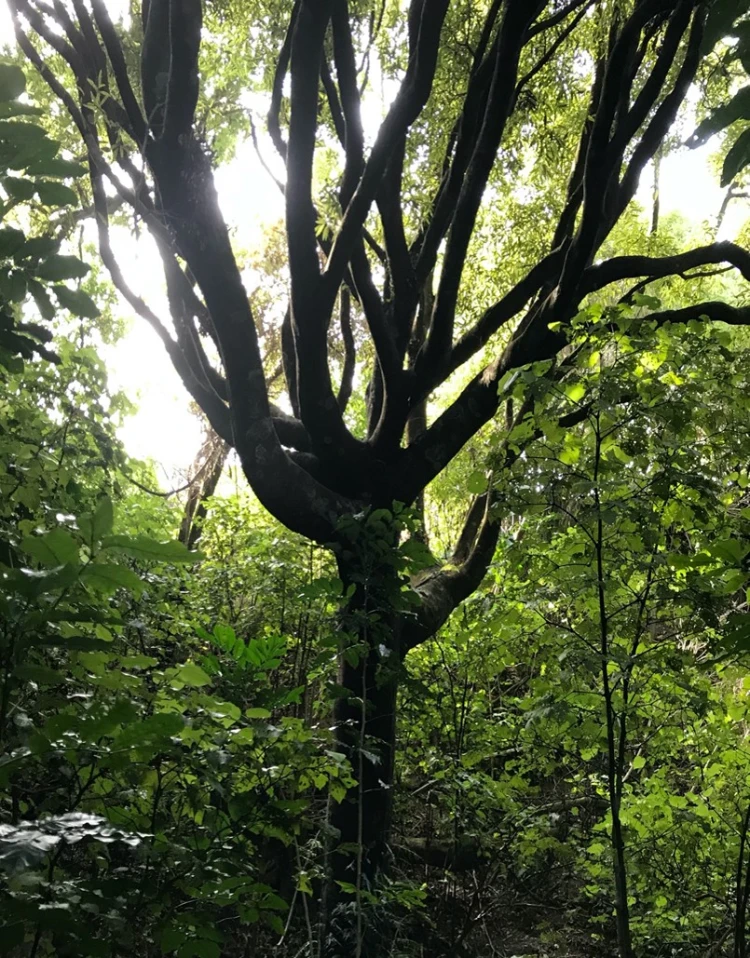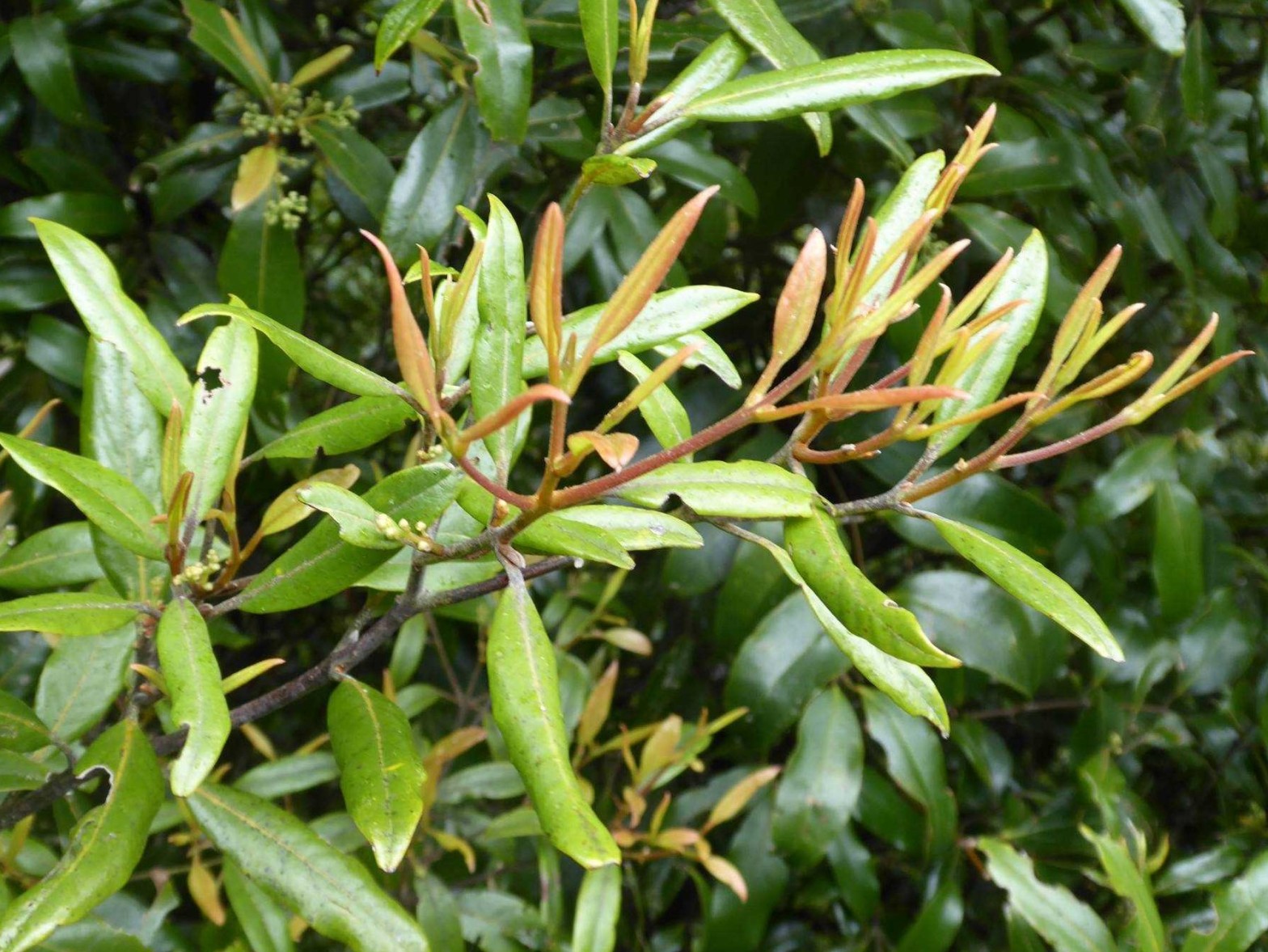The tree after which our suburb is named.
Beilschmiedia tawa or tawa is a dominant canopy tree in the Tawa native bush reserves.
The Genus name Beilschmieda is after Carl T Beilschmied (1793 – 1848), a Polish botanist. The species name tawa is a Māori word meaning ‘to be purple’, relating to the colour of ripe fruit. Tawa trees were so dominant in early settlement times, that the name Tawa Flat, and later Tawa, became the name we know today as the Tawa suburb.
Recognition features of tawa trees:
- the trunk is grey to black in colour, often with patches of lichens growing on it
- yellowish-green leaves have a lanceolate shape, a glossy upper-side and a paler green underside
- young yellowish leaves make tawa trees visible compared with the greener foliage of kohekohe and mahoe
- the branching pattern is often in a ‘candelabra’ formation
- there are tiny inconspicuous yellow flowers
- the oval purple/black fruit are an important food source for kererū.

Candelabra branch arrangement 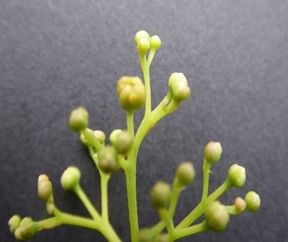
Tiny yellowish-green flowers 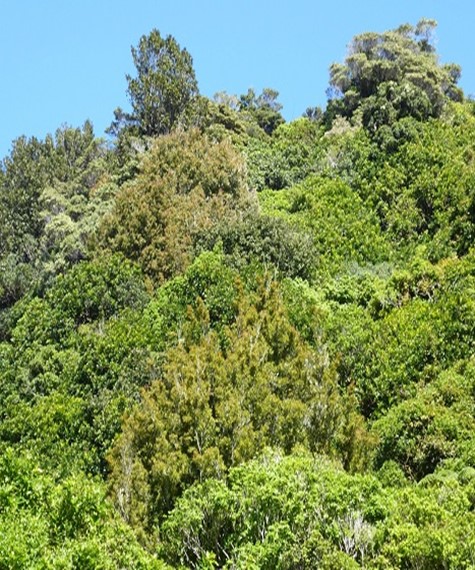
Young ‘yellowish’ foliage of tawa trees contrasts with the darker green of kohekohe and mahoe trees 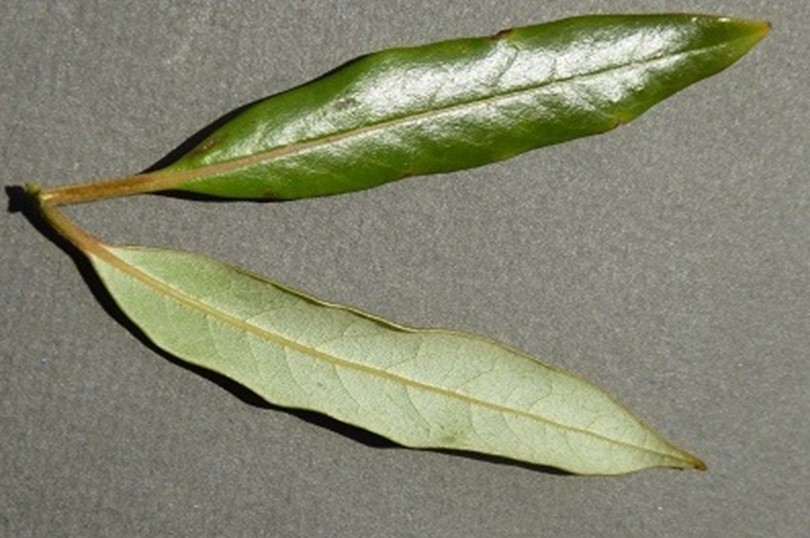
Upper and underside of tawa leaf 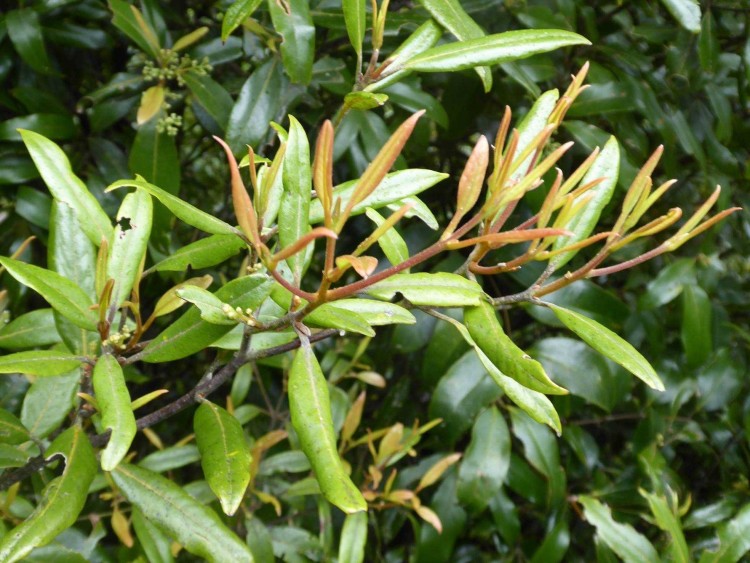
Contrasting colour of young and older tawa tree leaves 
Tawa tree trunk 
Ripe and unripe fruit
Tawa and uses by Māori
1. Hunting and Fishing
Wood was used to make long bird spears (taoroa) to catch kererū, but also for adze handles and to produce fire when hollowing out logs to make canoes and paddles.
2. Food
Tawa fruit has a soft creamy flesh and a hard kernel. The flesh was a food source even though it had a mild turpentine flavour (according to early European settlers). The fruit was soaked, dried and pulped for food. The kernels were also boiled, roasted or steamed in a hangi and stored, making them a valuable carbohydrate standby.
3. Medicinal
Bark of tawa was used for stomach pains and treating colds, while bark decoctions with rimu and tutu were used for disinfecting wounds.
Plants closely related to tawa
Tawa, camphor, bay trees and avocado are all in the laurel family called the Lauraceae.
Camphor is a culinary spice, a component of incense, is used as an insect repellent as well as a medicine. Bay leaves provide seasoning in cooking. The avocado, a popular edible fruit, called Persea americana, is a native of south and central Mexico and is often called an ‘avocado pear’.

Tawa fruit 
Stone enclosing the white fleshy kernel 
Hass avocado fruit showing the seed-containing stone 
Hass edible yellowish green flesh
Article Source: Gil Roper October 2021 Newsletter
